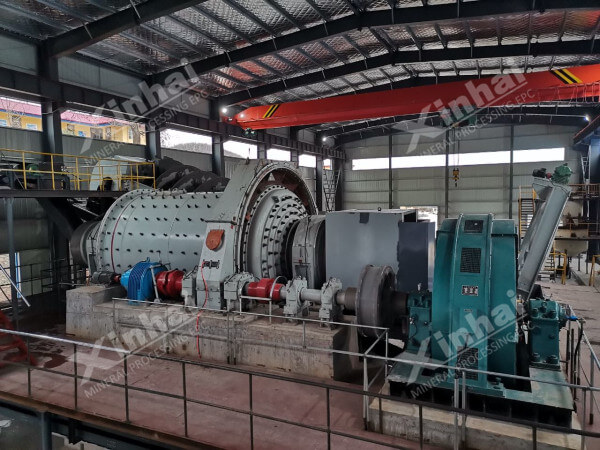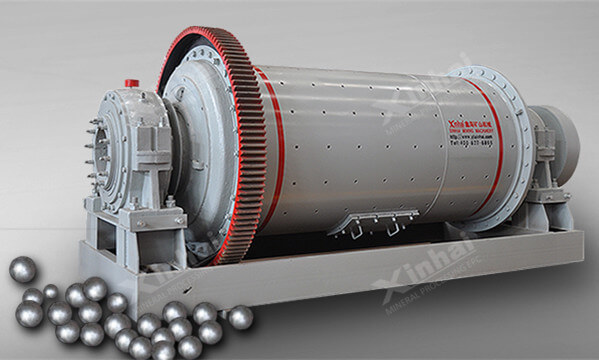With the continuous consumption of energy, energy scarcity has become a challenge facing the world, and energy conservation and consumption reduction are good strategies to address resource scarcity. As for the ball mill, it is the main energy consuming equipment for mineral processing enterprises. Controlling the energy consumption of the ball mill is equivalent to saving the production cost of the entire mining enterprise. Here are 5 factors that affect the energy consumption of ball mills, which can be said to be the key to energy conservation in ball mills.

The ball mill belongs to large-scale grinding equipment, which has a significant impact on the power grid at the moment of startup and consumes a lot of electricity. In the early days, the starting method of ball mills was usually self coupling step-down starting, and the starting current could reach 67 times the rated current of the motor.
At present, the starting method of ball mills is mostly soft start, but the starting current also reaches 4-5 times the rated current per click. These starting methods cause excessive current impact on the transformer grid, resulting in increased voltage fluctuations.
Xinhai ball mill is equipped with a frequency conversion control cabinet, which uses a wound motor time-frequency sensitive starting cabinet or a liquid resistance starting cabinet to achieve voltage reduction starting, reduce the impact on the power grid, and adjust the current and torque changes of the motor during starting.
The hourly processing capacity is an important parameter for measuring the processing capacity of a ball mill, and it is also an important indicator that affects the power consumption of a ball mill. For a ball mill with a certain rated power, its power consumption remains basically unchanged per unit time, but the more ore it processes per unit time, the lower its unit power consumption.
If the processing capacity of the overflow type ball mill is defined as Q (tons) and the power consumption is W (degrees), then the power consumption per ton of ore is i=W/Q. For production enterprises, the smaller the power consumption i per ton of ore, the more advantageous it is for cost control and energy conservation. According to the formula, in order to make i smaller, we can only try to increase Q, that is, increasing the hourly processing capacity of the ball mill is the most effective and direct way to reduce the power consumption of the ball mill.
Steel balls are the main grinding medium for ball mills, and the filling rate, size, shape, and hardness of steel balls can all affect the power consumption of the ball mill.
Steel ball filling rate: If there are too many steel balls filled in the mill, the steel balls in the central part can only wriggle and cannot perform effective work. Moreover, the more steel balls are loaded, the heavier the weight of the ball mill, which will inevitably cause higher power consumption. However, a low filling rate is not conducive to processing capacity. Therefore, the steel ball filling rate should be controlled at 40-50%.
The size, shape, and hardness of steel balls: Although they do not directly affect the energy consumption of the mill, they will have an indirect and significant impact, as factors such as the size, shape, and hardness of steel balls can affect the efficiency of the mill. Therefore, it is necessary to choose the appropriate size of steel balls according to the needs. Steel balls that have become irregularly shaped after use should be discarded as soon as possible, and the hardness of the steel balls should also meet the qualified standards.

During the closed-loop grinding process, qualified materials enter the next process, while unqualified materials are returned to the mill for further grinding. The amount of sand returned to the mill for further grinding is also known as the circulating load. During the grinding process, the higher the circulating load, the lower the working efficiency of the mill, and the smaller its processing capacity, resulting in higher energy consumption.
The impact of material hardness on mill energy consumption is self-evident. The higher the material hardness, the longer the grinding time required to obtain the target particle size. Conversely, the smaller the material hardness, the shorter the grinding time required to obtain the target particle size. The length of grinding time determines the hourly processing capacity of the mill, so the material hardness also affects the energy consumption of the mill. For materials on the same ore deposit, the hardness change should not be significant, so the impact of material hardness on the energy consumption of the ball mill is relatively small. In the long-term production process, the energy consumption fluctuations caused by this factor are also relatively small.
The above five aspects are important factors that affect the energy consumption of ball mills. When choosing a ball mill, we should not only consider the price, but also the design concept and production process. Many details will have an impact on the energy consumption of the ball mill. Therefore, it is particularly important to choose manufacturers like Xinhai who have research and development capabilities and advanced production processes!